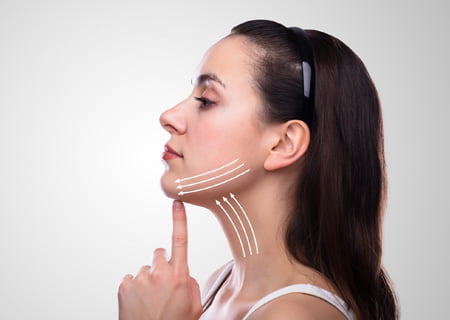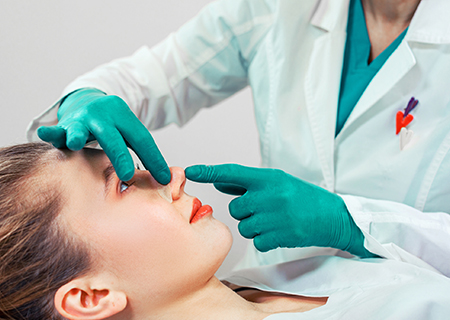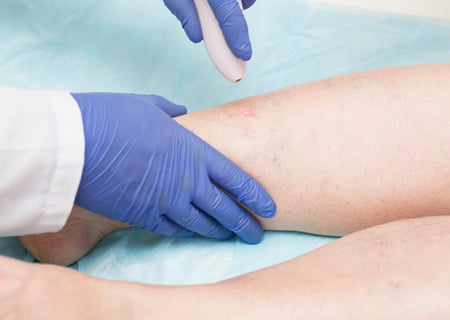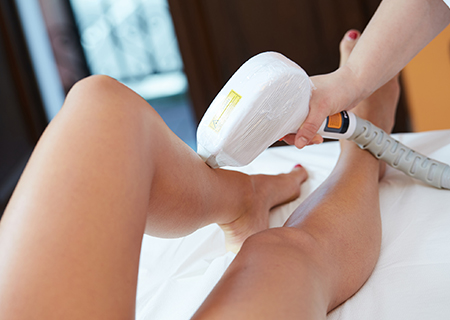Years of Wearing Earrings: How to Fix Sagging Earlobes

Earlobe repair surgery offers a quick and effective solution for stretched, torn, or damaged earlobes. This minimally invasive procedure can restore the natural appearance of your earlobes, boosting your confidence.
Key Takeaways
- Earlobe Repair Surgery: Corrects elongated, split, or damaged earlobes caused by heavy earrings, gauged piercings, or injuries.
- Quick Recovery: The procedure is painless and takes around an hour, with minimal downtime.
- Natural Results: Advanced techniques minimize scarring, restoring a symmetrical and aesthetically pleasing appearance.
- Aftercare: Avoid strenuous activities and earrings for about eight weeks post-surgery for optimal healing.
Just like other parts of the body and face, earlobes lose their elasticity over time. This naturally causes them to droop and sag as we get older, and the result can be exacerbated by some of the beauty rituals we partake in.
Wearing gauged ear piercings (deliberately stretched piercings in the lobe) or heavy earrings over a long period of time can elongate the earlobes - an issue that can be exacerbated if an ear piercing begins to tear, producing a cleft ear. Cleft ears often happen when someone removes clothing over their head and an earring catches on the fabric, ripping the skin, or when a child unintentionally grabs and pulls on an earring.
People also search
Fortunately, if your earlobes are too long, have an expanded piercing hole, or if your piercing has been torn, there are steps you can take to ameliorate the problem.
Earlobe Repair Surgery to the Rescue!
No matter what the cause of your lengthened or misshapen earlobes is, if you’re unhappy with them, there is a solution: earlobe repair surgery .
Earlobe repair surgery is a form of cosmetic plastic surgery, and quite a minor one at that. The process itself takes place in-office with a topical and local anesthetic so that it’s completely painless. Everything takes just slightly over an hour, and the recovery time is quick. You can return to regular activity immediately following your procedure, and final results can generally be seen in a few weeks.
Earlobe repair surgery is the only procedure that can adequately fix severely drooping or torn earlobes, since elongated earlobes will not bounce back and get shorter over time, and expanded and lengthened piercings will not grow back together, and there are no topical creams or other procedures that will effectively repair the problem.
Earlobe Repair: Results, Recovery, and Follow-Up
Are you tired of living with torn, stretched, or damaged earlobes? Say goodbye to self-consciousness and hello to a flawless appearance with advanced earlobe repair surgery.
Earlobe repair techniques are designed to address various concerns, including elongated piercings, split earlobes, or gauged earlobes. With meticulous precision, your surgeon will reshape and repair your earlobes, creating a natural, symmetrical, and aesthetically pleasing outcome.
During the recovery process, you can expect minimal discomfort and downtime after your earlobe repair surgery. Following the procedure, it is common to experience mild swelling and bruising, which will gradually subside over time. It is also recommended to avoid strenuous activities and refrain from wearing earrings for a specified period to allow for optimal healing.
Following your earlobe repair surgery, you will receive personalized recovery instructions to ensure a swift and comfortable healing process, along with guidance and support from your surgeon throughout your journey to recovery.
Can earlobe repair surgery fix stretched or torn earlobes?
Yes, earlobe repair surgery is a safe and effective procedure that reshapes and repairs stretched, torn, or elongated earlobes. The surgery is minimally invasive, takes about an hour, and results in natural-looking, symmetrical earlobes.
Find Out if You’re a Candidate for Earlobe Repair Plastic Surgery
Interested in earlobe repair surgery? Dr. Kristina Zakhary is a Calgary-based surgeon who offers earlobe repair procedures, along with a variety of other procedures and surgeries.
Dr. Zakhary is a an Otolaryngology Head & Neck Surgeon with special focus in Facial Plastic and Reconstructive Surge with dedicated training in Ear, Nose, Throat and Head and Neck Surgery and facial plastic surgery. With her training and years of experience carrying out successful earlobe repair surgeries for her patients, she is well-equipped to help you with an earlobe repair procedure of your own.
There’s no reason to continue living with elongated or torn earlobes that you dislike, and earlobe repair surgery in Calgary is the perfect solution to help boost your self-confidence and self-esteem immediately.
To learn more about this form of plastic surgery and find out if you’re a candidate, contact the cosmetic surgeon Edmonton residents trust most today — contact Dr. Kristina Zakhary!
Call today at 403-668-2917, or navigate here to book a consultation.
Frequently Asked Questions
Is Earlobe Repair Surgery Painful?
The procedure is typically performed under local anesthesia, ensuring minimal discomfort during the surgery. Any post-operative discomfort can be managed with over-the-counter pain medication.
How Long Does Earlobe Repair Surgery Take?
The procedure is usually quick, lasting between 30 minutes to an hour, depending on the extent of the repair needed.
Will There Be Visible Scarring?
Dr. Zakhary uses advanced techniques to minimize scarring. Incisions are strategically placed within the natural contours of the earlobe, resulting in discreet and well-healed scars.
When Can I Wear Earrings Again?
You will need to avoid wearing earrings for a specified period during the healing process. Dr. Zakhary will guide you on when it is safe to resume wearing earrings, typically after 8 weeks.
Can I Have Both Earlobes Repaired at the Same Time?
Yes, both earlobes can be repaired during a single session, allowing for symmetrical results and reducing overall downtime.
















